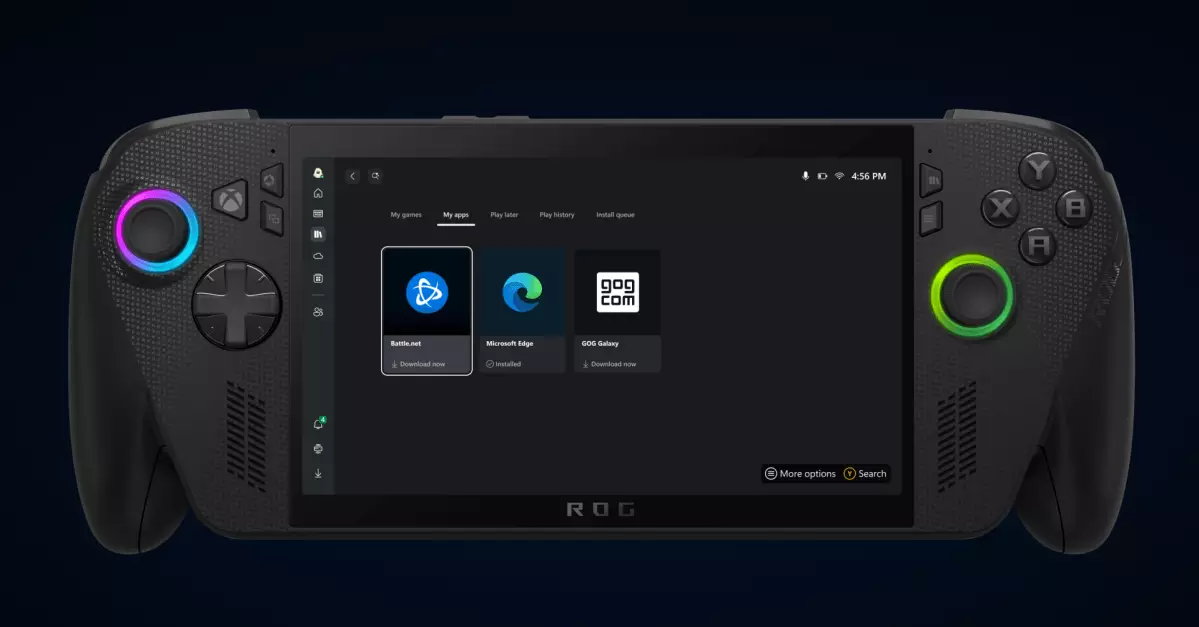Microsoft’s latest initiative to revolutionize PC gaming demonstrates a forward-thinking approach that could redefine user interaction with gaming and application management. The introduction of the new “My Apps” feature within the Xbox app is not merely a helpful update; it’s a strategic move aimed at consolidating the fragmented landscape of gaming utilities, browsers, and storefronts into a seamless, user-centric ecosystem. This shift signals Microsoft’s recognition that today’s gamers crave simplicity, speed, and integrated access—qualities that traditional Windows setups often lack.
This new interface aims to eliminate the hassle of navigating multiple storefronts or launching individual applications through a cluttered Windows desktop. Instead, it offers instant access to commonly used apps—whether it’s a browser like Chrome, a game launcher such as Battle.net, or third-party game stores like GOG Galaxy—all within a unified hub. Such integration promises a purer, less frustrating experience, allowing gamers to stay immersed rather than bogged down in administrative tasks.
While this sounds promising, it critically underscores Microsoft’s broader vision of transforming Windows from a mere desktop OS into a dedicated gaming hub. By combining features of both Windows and Xbox ecosystems, the company is poised to create a unified platform. Yet, this raises questions about user autonomy and the openness of such a walled garden. Will this centralized system restrict or enhance choice, or could it lead to a monopolistic landscape where third-party developers struggle for visibility?
Handheld Gaming Devices: The New Frontier of Convenience
One of the most intriguing aspects of Microsoft’s new strategy is its focus on handheld gaming PCs like the ROG Xbox Ally. These devices epitomize portability, and Microsoft’s efforts reflect a desire to optimize gaming on the go. The “My Apps” feature aims to reduce reliance on traditional interfaces, providing quick access directly from the handheld device’s Xbox experience. This is a recognition of shifting consumer preferences—more gamers are looking for quick, efficient, on-the-fly access to their libraries and utilities.
This approach could be a game-changer for mobile gaming. Instead of fiddling with multiple apps or navigating labyrinthine menus, players can launch essential applications directly from the dashboard. It’s a move that demonstrates Microsoft’s awareness that future success depends on smarts and speed, especially on limited screens and hardware with constrained input options. Yet, it also exposes potential hurdles—such as the stability of the app installer and the reliability of downloads, which still seem to be work in progress.
Furthermore, integrating third-party storefronts and utilities into this compact ecosystem subtly challenges the dominance of conventional app stores—particularly the Windows Store and Steam. It suggests a future where “one-stop-shop” experiences become the norm, challenging existing hierarchies and possibly redefining how providers compete for user attention.
The Broader Implications: A Strategic Bet on the Future of Gaming
Microsoft’s ambition here is ambitious, bordering on revolutionary. The company envisions the Xbox app as a comprehensive hub—not just for gaming, but for all things related to PC entertainment. This isn’t just about convenience; it’s about reshaping how PC gaming is integrated into daily life. By aggressively pushing for a unified platform, Microsoft aims to deepen its ecosystem lock-in, encouraging users to stay within its universe instead of branching out to independent solutions.
This move also hints at a broader strategy to challenge the supremacy of game-specific platforms. The attempt to include rivals like Battle.net and GOG Galaxy within the core app ecosystem indicates a desire to neutralize fragmentation. If successful, it could offer players a more streamlined, less confusing experience—maybe even enticing those who have hesitated to switch to Windows 11 or upgrade their gaming hardware.
However, this strategy also comes with risks. The unstable beta status and compatibility issues suggest that Microsoft still has a long way to go. If bugs persist or if users feel boxed into a closed system, it could backfire, breeding frustration rather than loyalty. Moreover, the heavy-handed approach risks alienating third-party developers and stores that rely on open ecosystems to thrive.
Ultimately, Microsoft’s “My Apps” initiative is less a small feature update and more a bold declaration of intent: the future of PC gaming is unified, portable, and centered around user convenience. Whether this vision will succeed or spawn new challenges remains to be seen, but it undeniably sets the stage for a new era in gaming—one where the boundaries between platforms blur, and players gain unprecedented control over their digital worlds.

